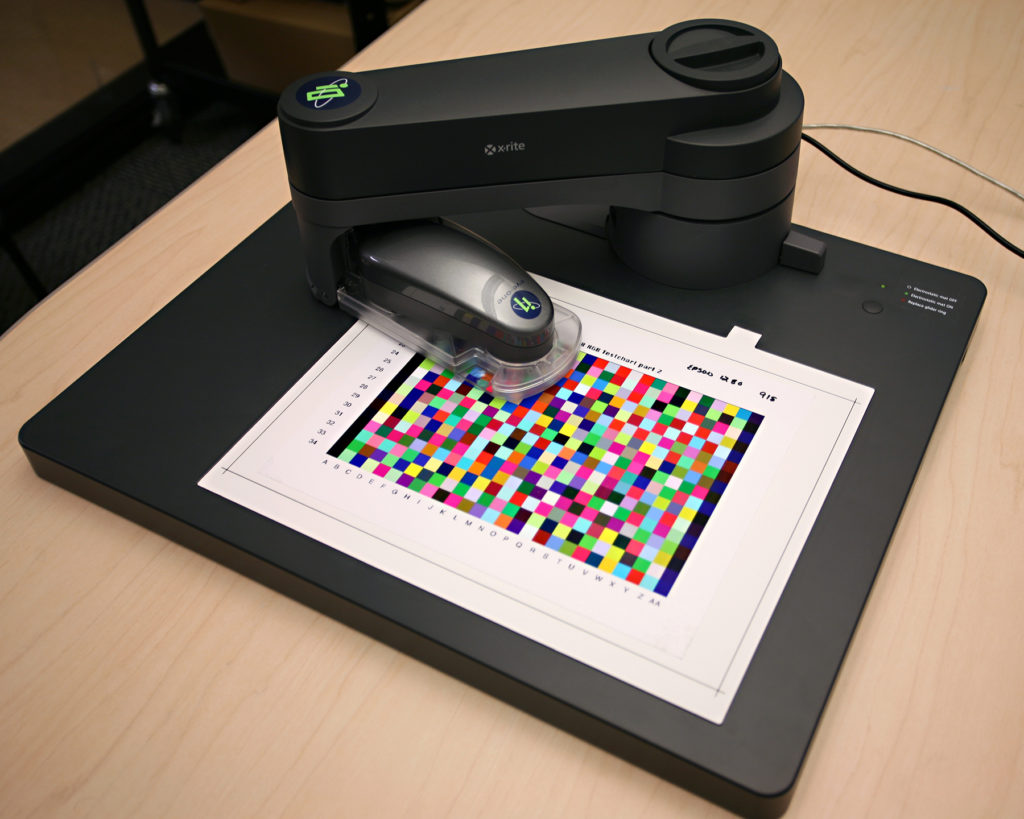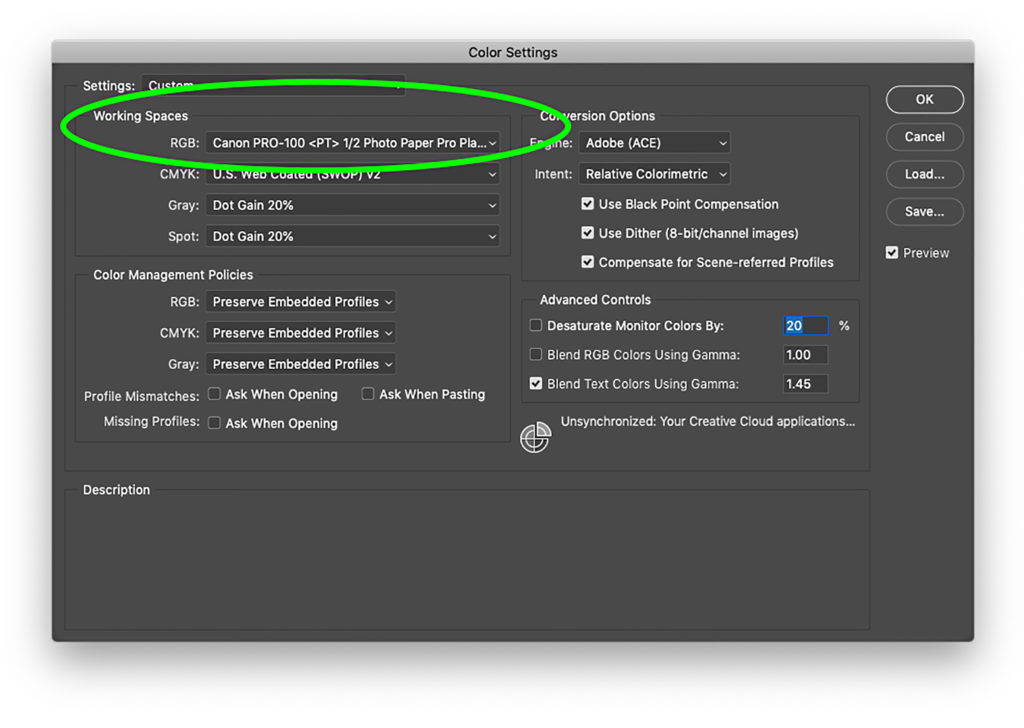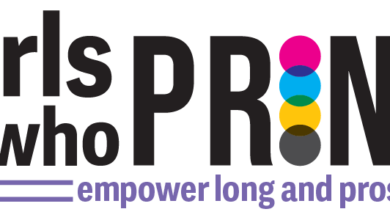
Anyone involved in the digital graphics business has experienced the common and daunting problem of color matching from screen to printer. An image can look dazzling on-screen with brilliant saturated colors, but when printed, it looks like unwashed laundry—dull, weird colors, too much cyan or magenta, yucky browns, etc.
The problem is that the gamut or range of color the monitor can display is different from the colors the printer can print. The solution to this problem is solved by managing color.
Color management begins at the monitor. A digital profile is made with a hardware device called a colorimeter that measures the temperatures of the on-screen colors. This profile describes the monitor’s capabilities and assures that it runs optimally and displays color at its full range.
A print of a target image consisting of a grid of colored squares is output to a specific printer and substrate (pictured above). A unique profile should be made for each substrate because each substrate has different reflective and ink absorption capabilities. A hardware device, called a spectrophotometer, measures the target print, and the software creates a profile based on the printer’s gamut. The profile is loaded into the image editing software’s Color Settings dialog box. The custom profile can be selected from the RGB menu in the Working Spaces field.
Many printers include profiles with their driver software that are accessed from the RGB menu. These profiles were made for specific printing environments and substrates. Over the years, these profiles have been improved, and today they are pretty reliable. They change RGB values to match the ink set’s color capabilities and the reflective qualities of the substrate to produce an on-screen image that mimics the potential gamut of the printer’s capabilities. A custom profile is more accurate and preferable to the manufacturer’s profiles, but of course, you’ll need to purchase the equipment and software to make one.





